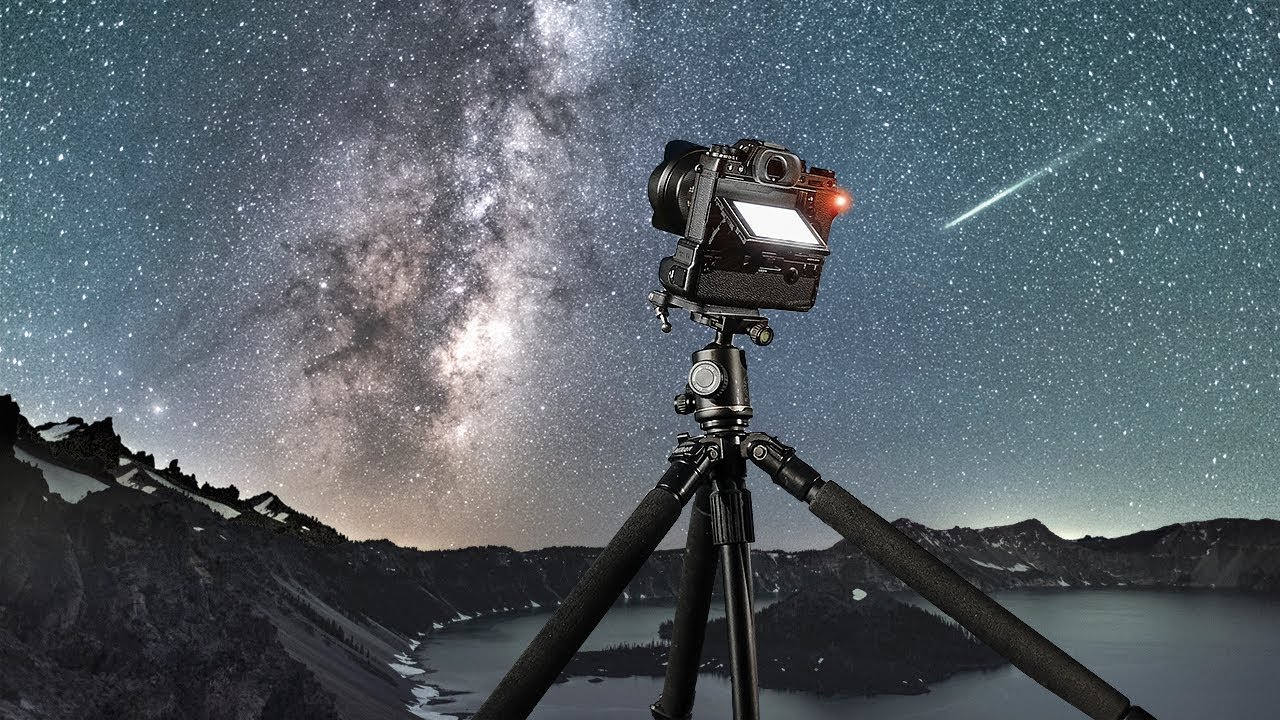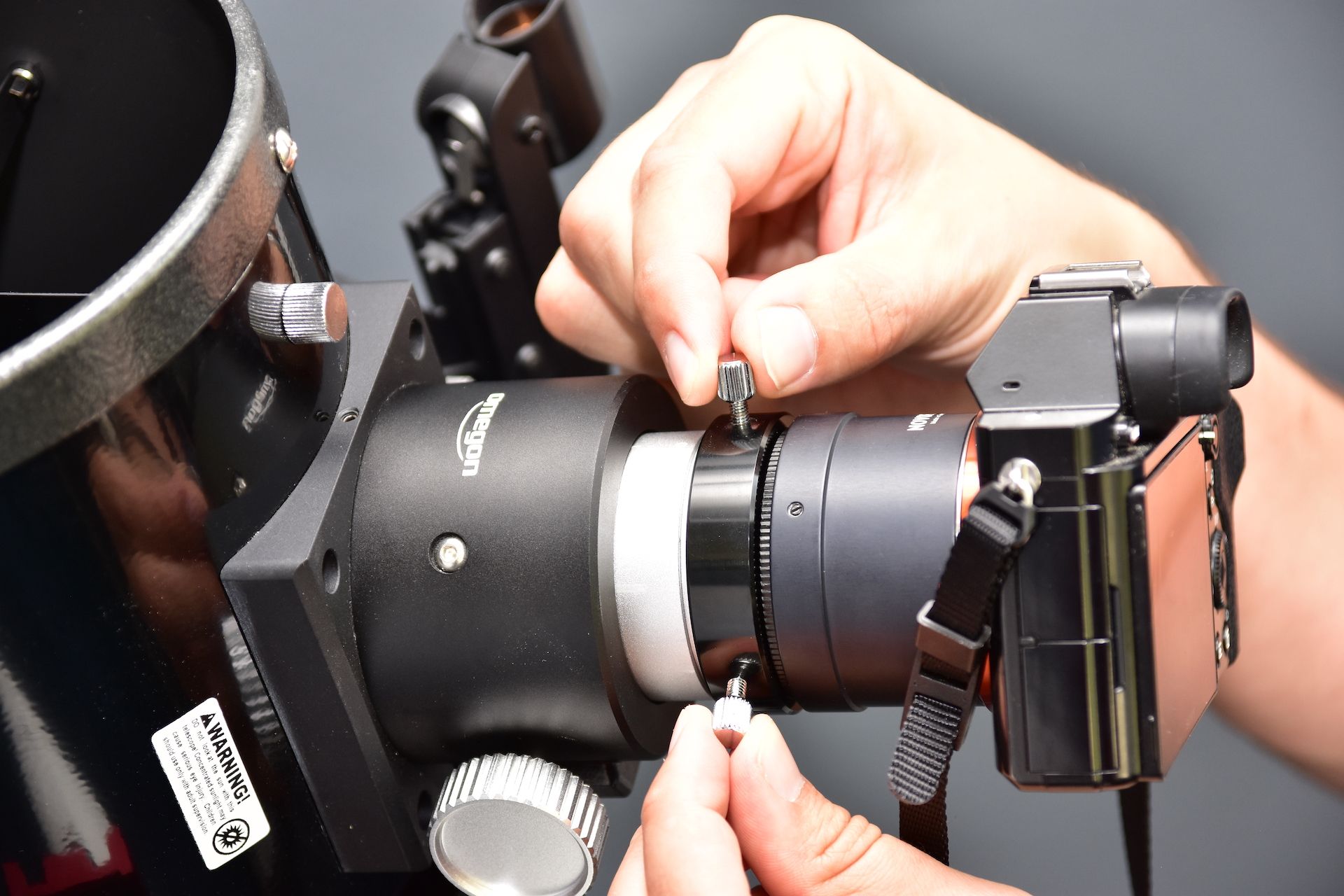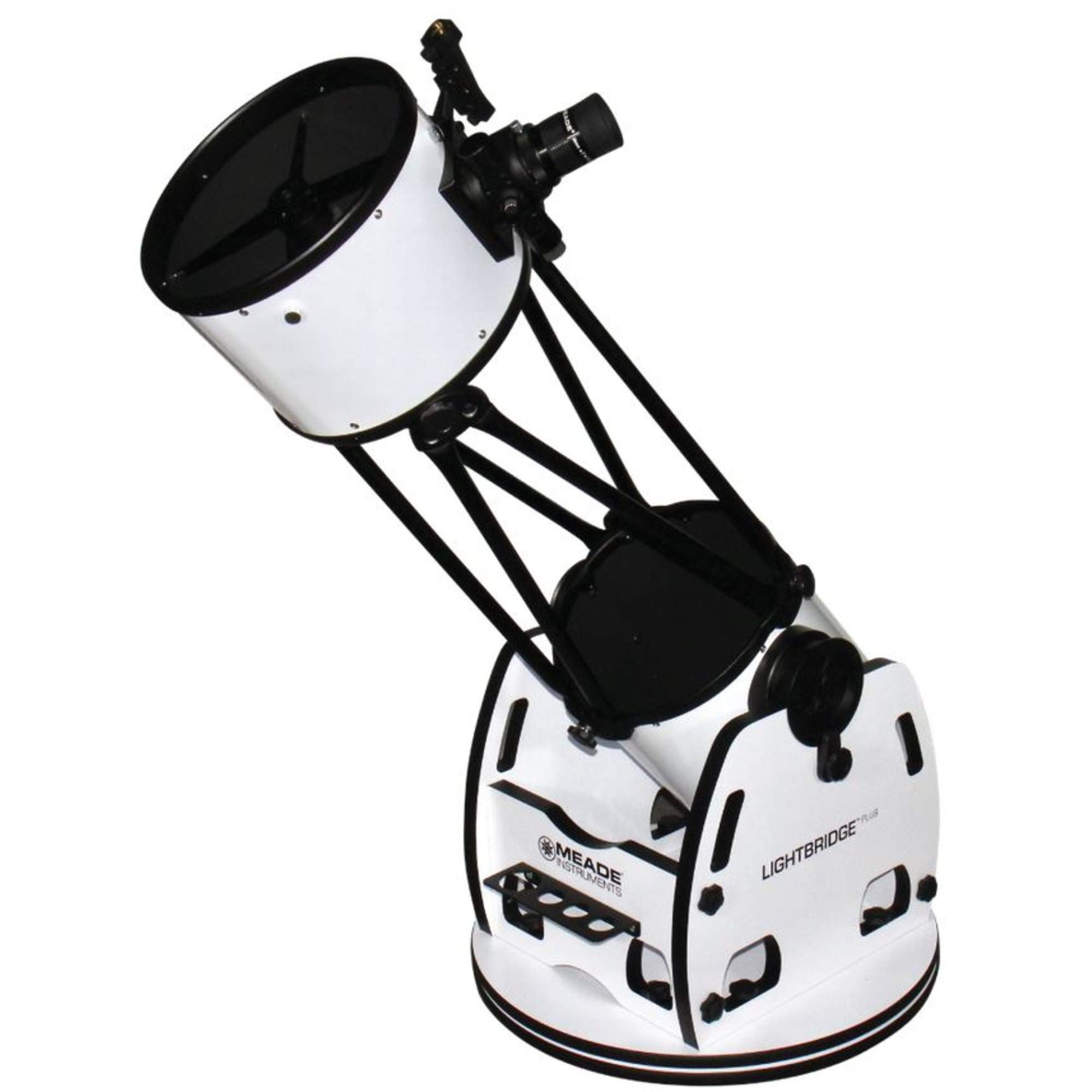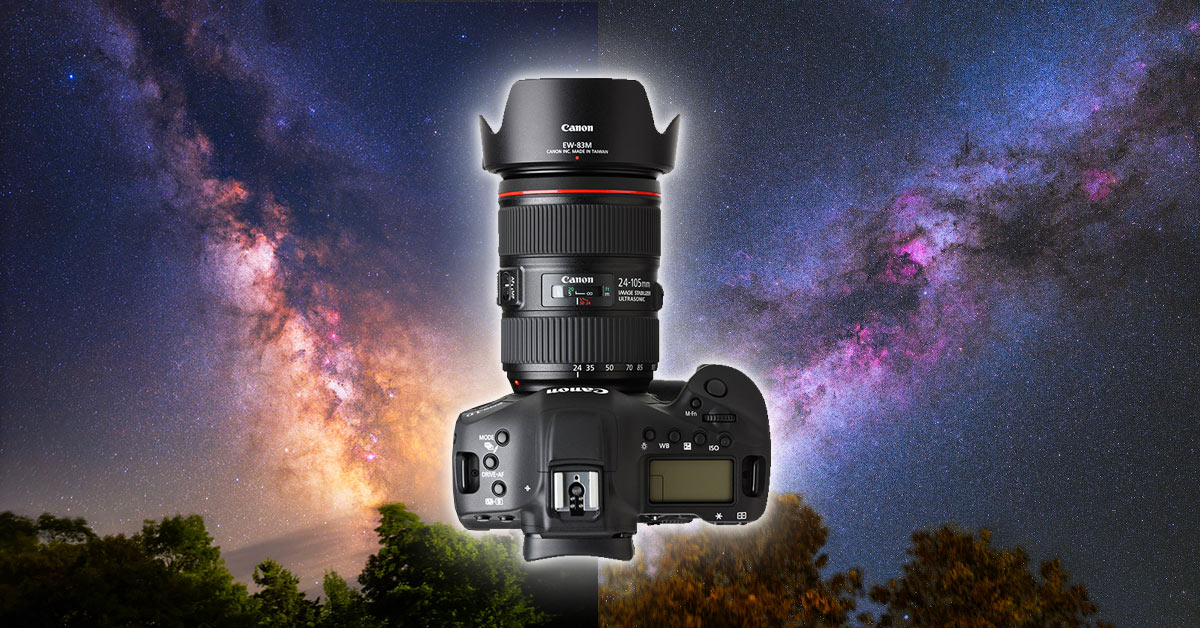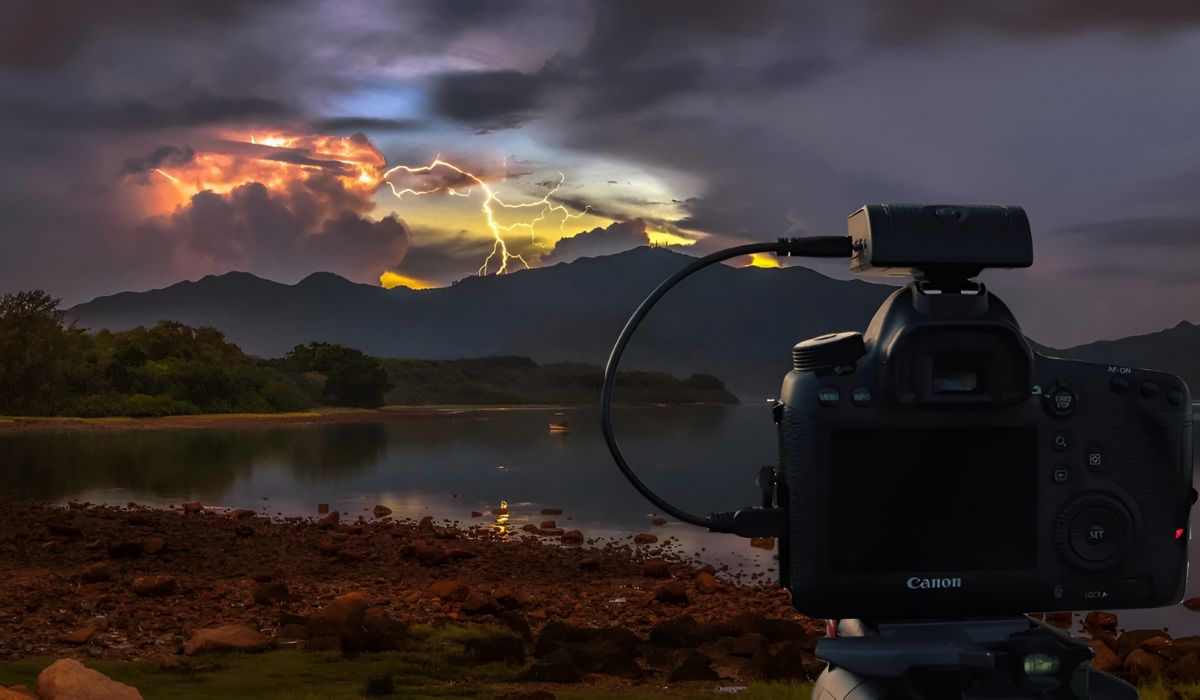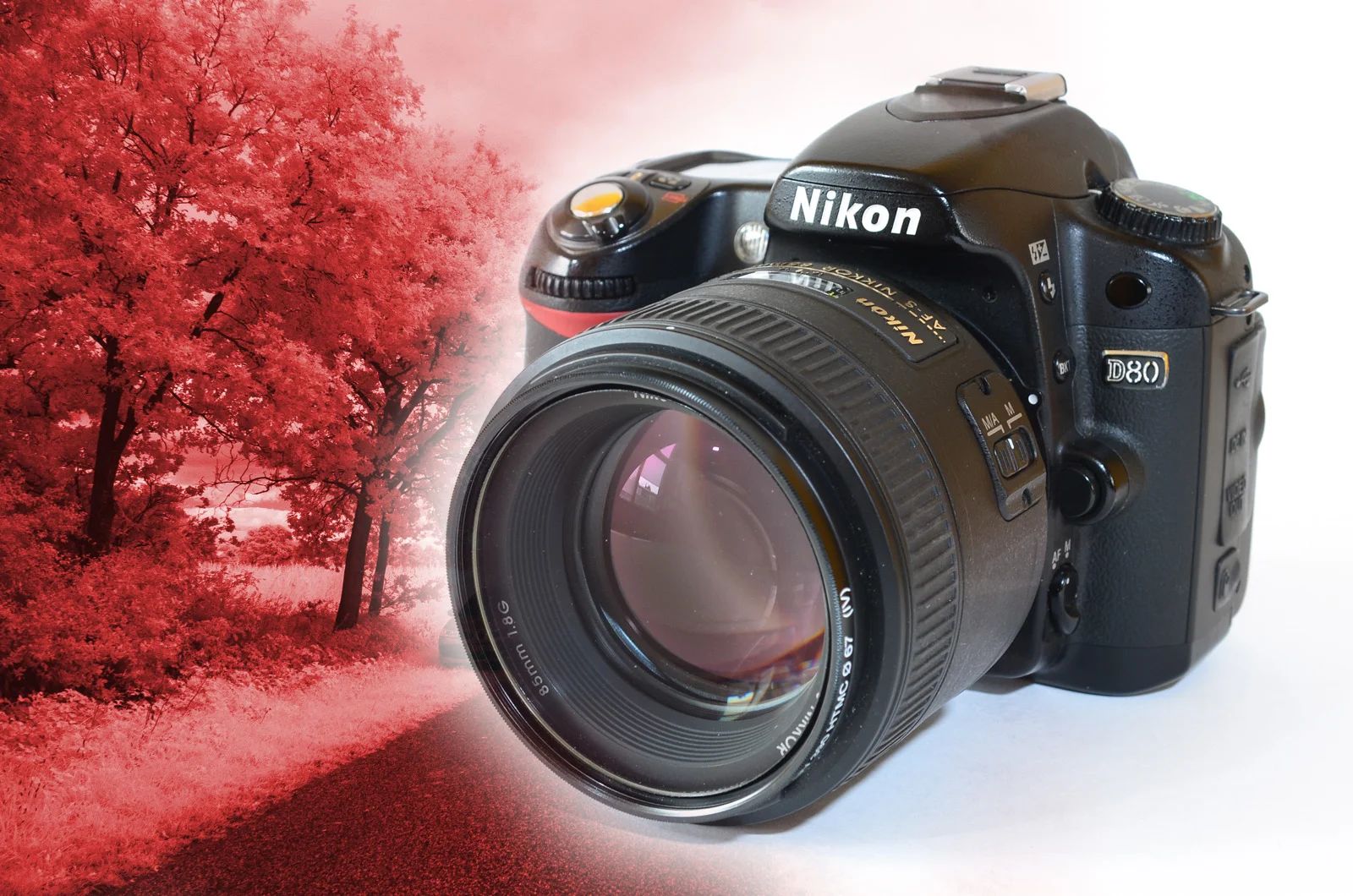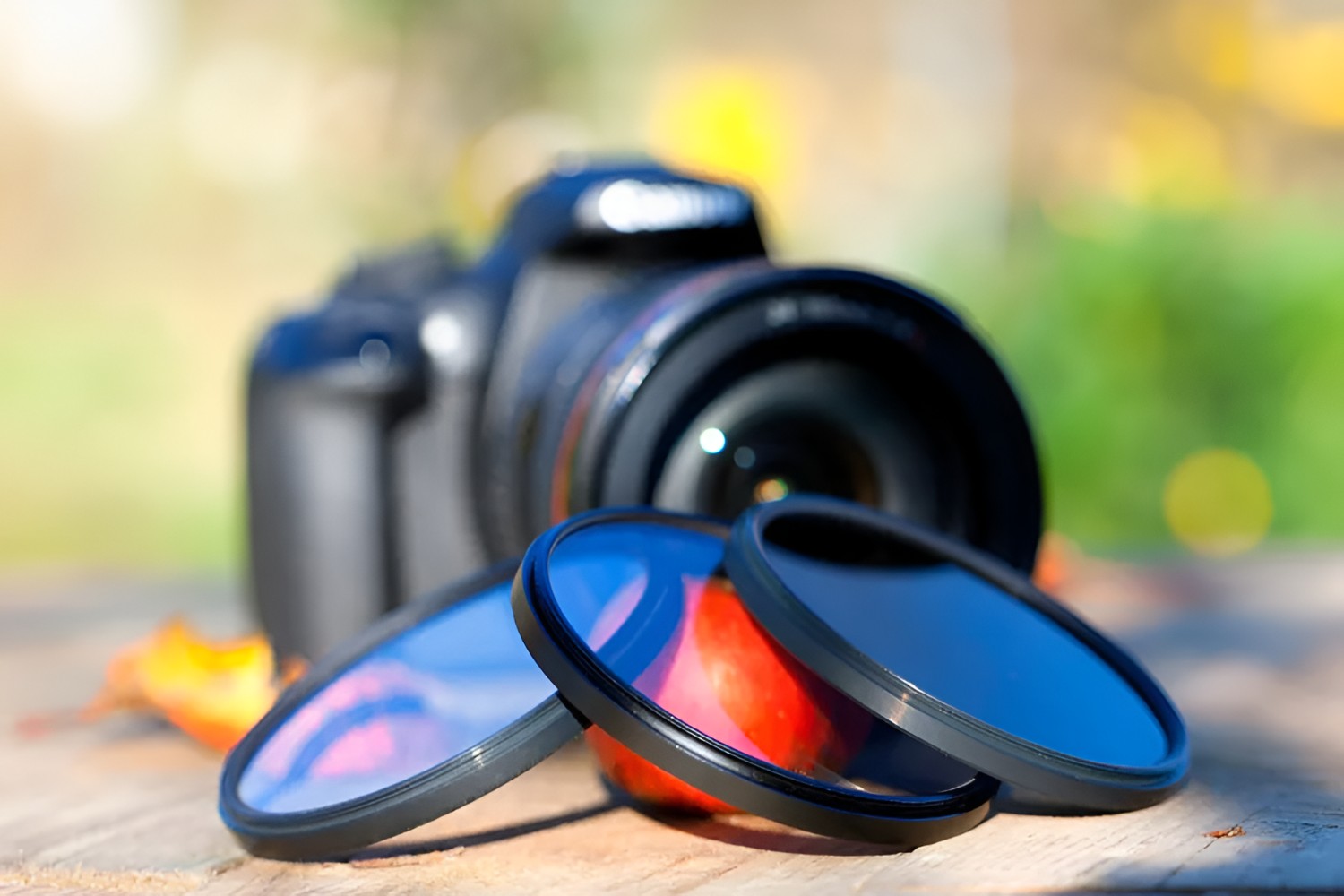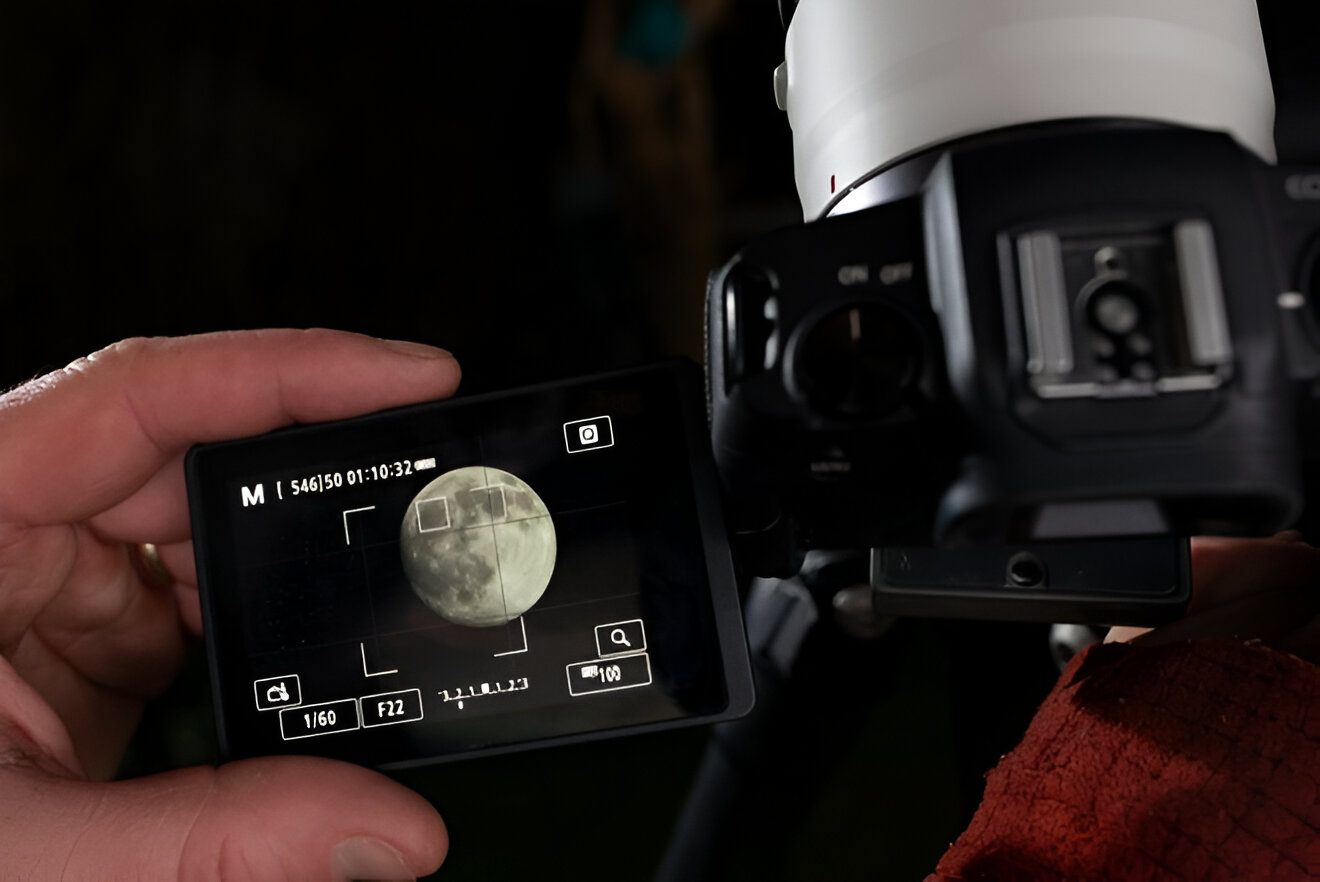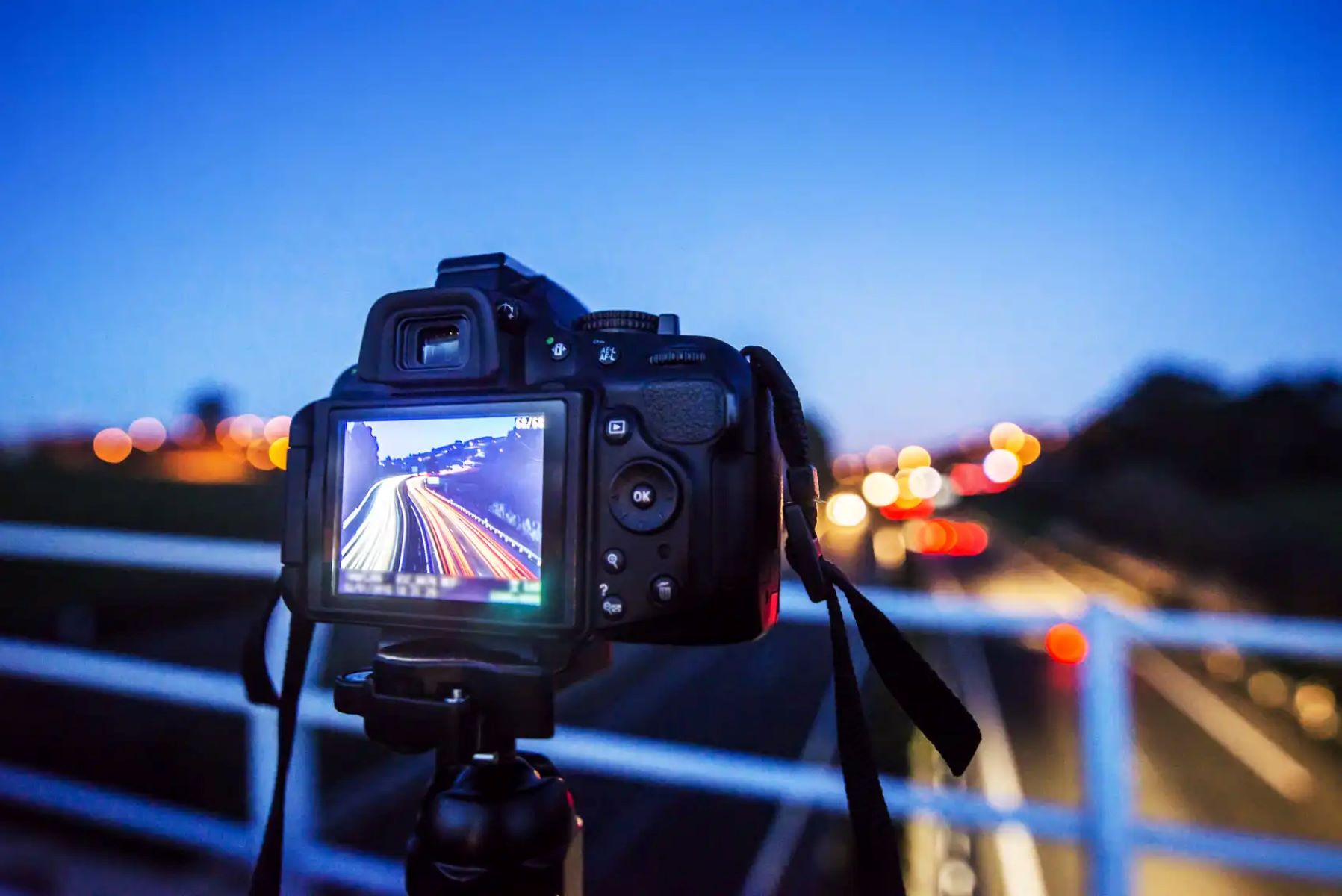Introduction
Photographing the sky with a DSLR camera offers a captivating way to capture the beauty and grandeur of nature. Whether it's the vibrant colors of a sunset, the mesmerizing dance of the Northern Lights, or the breathtaking expanse of the Milky Way, the sky provides endless opportunities for stunning photography. In this guide, you will learn how to harness the full potential of your DSLR camera to capture the awe-inspiring wonders of the sky.
From selecting the right camera equipment to mastering essential camera settings, finding the perfect location, and understanding the importance of timing, each aspect plays a crucial role in crafting remarkable sky-centric photographs. Additionally, we will explore tips and techniques to elevate your sky photography and post-processing methods to enhance the final images.
Capturing the sky with a DSLR camera is not merely about taking pictures; it's about immortalizing moments of natural beauty and creating visual stories that inspire and awe. So, grab your camera, and let's embark on a journey to unlock the secrets of capturing the sky in all its splendor.
Choosing the Right Camera Equipment
Before delving into the realm of sky photography, it’s essential to equip yourself with the right tools. When it comes to capturing the sky with a DSLR camera, the choice of equipment can significantly impact the quality of your photographs. Here’s what you need to consider:
- Camera Body: Opt for a DSLR camera with a high-resolution sensor to capture intricate details in the sky. Full-frame cameras are ideal for low-light conditions, such as astrophotography, due to their superior performance in high ISO settings.
- Lenses: Wide-angle lenses, such as 14-24mm or 16-35mm, are well-suited for capturing expansive sky vistas, including sunsets, starry skies, and celestial events. For astrophotography, consider fast prime lenses with wide apertures, such as f/2.8 or wider, to gather more light and reveal the cosmos in stunning detail.
- Tripod: Stability is crucial when photographing the sky, especially during long exposures. Invest in a sturdy tripod to minimize camera shake and ensure sharp, clear images, particularly in low-light conditions.
- Remote Shutter Release: A remote shutter release or intervalometer allows you to trigger the camera without physically touching it, reducing the risk of introducing vibrations that can compromise image quality during long exposures.
- Filtration: Consider using graduated neutral density filters to balance the exposure between the bright sky and the foreground, especially during sunrise or sunset photography. Additionally, light pollution filters can enhance the clarity of celestial subjects in urban or light-polluted areas.
By carefully selecting the right camera body, lenses, tripod, remote shutter release, and filters, you can lay a solid foundation for capturing the sky with your DSLR camera. These essential tools will empower you to unleash your creativity and immortalize the celestial wonders that unfold above.
Understanding Camera Settings
Mastering the intricacies of camera settings is paramount in capturing the sky with your DSLR. Whether you’re photographing a radiant sunset, the twinkling stars, or the elusive auroras, understanding and manipulating your camera settings can make the difference between ordinary and extraordinary sky photographs. Here are the key settings to focus on:
- Aperture: When photographing the sky, especially during golden hour or astrophotography, using a wide aperture (low f-stop) allows more light to enter the lens, resulting in vibrant colors and sharp details. However, for landscape scenes that require a greater depth of field, consider using a narrower aperture (higher f-stop) to ensure both the foreground and the sky are in focus.
- Shutter Speed: The choice of shutter speed depends on the effect you want to achieve. For dynamic cloud movements or silky smooth water reflections in sky-centric landscapes, a slower shutter speed can create a sense of motion and tranquility. In contrast, astrophotography often requires longer exposures to capture the faint light of stars and galaxies, necessitating a sturdy tripod to prevent motion blur.
- ISO Sensitivity: In low-light conditions, such as twilight or astrophotography, increasing the ISO sensitivity allows your camera to capture more light. However, be mindful of noise that can result from high ISO settings. Modern DSLRs offer impressive performance at higher ISO values, but finding the optimal balance between exposure and noise is crucial.
- White Balance: The color temperature of natural light varies throughout the day, influencing the overall mood and tone of your sky photographs. Experiment with different white balance settings to achieve accurate colors or creative interpretations, especially during sunrise and sunset, where warm hues dominate the sky.
- Exposure Compensation: When photographing high-contrast scenes, such as a vivid sunset or a moonlit sky, utilizing exposure compensation can help maintain balanced exposure. Adjusting the exposure to preserve highlight details or enhance shadow areas can elevate the visual impact of your sky-centric images.
By familiarizing yourself with these fundamental camera settings and their creative implications, you can harness the full potential of your DSLR to capture the sky in all its splendor. Understanding how each setting influences the final image empowers you to craft visually compelling photographs that convey the awe-inspiring beauty of the celestial canvas above.
Finding the Perfect Location
Choosing the right location is pivotal in capturing stunning sky-centric photographs with your DSLR camera. Whether you’re aiming to photograph a breathtaking sunset, the starry night sky, or the elusive auroras, the setting plays a critical role in shaping the visual narrative of your images. Here’s how to find the ideal location for your sky photography endeavors:
- Scout for Iconic Landmarks: Seek out iconic landmarks, natural features, or vantage points that offer compelling foreground elements to complement the sky. Whether it’s a lighthouse against a dramatic sunset or a serene lake reflecting the stars, incorporating distinctive features can elevate the visual impact of your sky-centric compositions.
- Consider Light Pollution: For astrophotography enthusiasts, escaping light pollution is paramount to reveal the splendor of the night sky. Research and identify dark sky locations or designated dark sky parks that offer minimal light pollution, providing an unobstructed view of celestial wonders.
- Weather and Atmospheric Conditions: Stay attuned to weather forecasts and atmospheric conditions, especially when photographing dynamic sky phenomena such as thunderstorms, rainbows, or the Northern Lights. Understanding weather patterns and atmospheric phenomena can help you anticipate and capture extraordinary moments in the sky.
- Embrace Natural Elements: Emphasize the influence of natural elements, such as mountains, coastlines, or open plains, to create a sense of scale and grandeur in your sky-centric compositions. The juxtaposition of the expansive sky against natural landscapes can evoke a profound sense of wonder and awe.
- Local Knowledge and Exploration: Engage with local communities, photographers, or astronomy groups to gain insights into hidden gems and lesser-known locations that offer unparalleled opportunities for capturing the sky. Exploring off-the-beaten-path locales can unveil unique perspectives and untapped potential for your sky photography pursuits.
By strategically selecting locations that align with your creative vision and the specific sky phenomena you aim to capture, you can enhance the storytelling aspect of your photographs and imbue them with a sense of place and purpose. The perfect location serves as the stage upon which the drama of the sky unfolds, enriching your photographic narrative with depth and significance.
Timing is Everything
When it comes to photographing the sky with a DSLR camera, timing plays a pivotal role in capturing the most compelling and visually stunning moments. Whether you’re chasing the perfect sunset, awaiting the emergence of stars in the night sky, or hoping to witness the ethereal dance of the auroras, understanding the significance of timing is essential for achieving remarkable sky-centric photographs. Here’s why timing matters and how to leverage it to your advantage:
- Sunrise and Sunset: The golden hours surrounding sunrise and sunset, characterized by soft, warm light and captivating hues, offer an ideal backdrop for sky photography. Plan your shoots around these times to capture the sky ablaze with vibrant colors, dramatic cloud formations, and the interplay of light and shadow.
- Blue Hour: The period before sunrise and after sunset, known as the blue hour, bathes the sky in a serene, ethereal blue light. This transitional phase presents an enchanting canvas for capturing moody, atmospheric scenes and the subtle emergence of celestial bodies against a luminous backdrop.
- Starry Nights: For astrophotography enthusiasts, timing your shoots during moonless nights or when the moon is below the horizon can maximize the visibility of stars, galaxies, and celestial phenomena. Additionally, consider astronomical events, such as meteor showers or planetary alignments, to add celestial intrigue to your night sky compositions.
- Weather Dynamics: Understanding weather patterns and atmospheric dynamics is crucial for anticipating and capturing dynamic sky phenomena, including thunderstorms, rainbows, and cloud formations. Monitoring weather forecasts and being attuned to atmospheric changes can help you seize fleeting yet mesmerizing moments in the sky.
- Aurora Chasing: If you’re drawn to the captivating allure of the Northern or Southern Lights, research the aurora forecast and plan your shoots during periods of heightened auroral activity. Timing your excursions to coincide with geomagnetic storms can dramatically increase the likelihood of witnessing and photographing these celestial displays.
By embracing the adage “timing is everything,” you can orchestrate your sky photography endeavors to align with the most visually compelling and emotionally evocative moments. Whether it’s the gentle transition of light during golden hours, the enchanting allure of the blue hour, or the mesmerizing dance of celestial phenomena, strategic timing allows you to infuse your sky-centric photographs with a sense of wonder, drama, and awe.
Tips for Capturing the Sky
When venturing into the realm of sky photography with your DSLR camera, incorporating expert tips and techniques can elevate your images from ordinary to extraordinary. Whether you’re aiming to capture the vivid hues of a sunset, the celestial wonders of the night sky, or the ephemeral beauty of atmospheric phenomena, these tips will guide you towards creating captivating and visually stunning sky-centric photographs:
- Compose with Purpose: When framing your sky-centric shots, leverage the principles of composition to create visually engaging and balanced photographs. Incorporate leading lines, captivating foreground elements, and dynamic perspectives to guide the viewer’s gaze towards the expansive sky, fostering a sense of depth and narrative within the frame.
- Embrace Long Exposures: Experiment with long exposure techniques to capture the mesmerizing motion of clouds, the serene flow of water bodies under the sky, and the ethereal trails of stars in the night sky. Long exposures can infuse your sky-centric images with a sense of dynamism and tranquility, adding a touch of magic to the final photographs.
- Harness the Power of Reflections: Seek out opportunities to incorporate reflections of the sky in bodies of water, be it tranquil lakes, winding rivers, or coastal shores. Calm, reflective surfaces can amplify the visual impact of the sky, creating symmetrical and ethereal compositions that evoke a sense of serenity and beauty.
- Experiment with Silhouettes: Silhouettes against the sky offer a compelling visual contrast, emphasizing the intricate shapes and contours of subjects while showcasing the dramatic backdrop of the sky. Whether it’s the silhouette of a lone tree, a majestic mountain ridge, or architectural marvels, leveraging silhouettes can add depth and drama to your sky-centric compositions.
- Master Astrophotography Techniques: For capturing the celestial marvels of the night sky, delve into astrophotography techniques such as star stacking, tracking celestial movements, and utilizing dedicated astronomy software to plan and execute your shoots. By mastering these techniques, you can reveal the mesmerizing beauty of stars, galaxies, and cosmic phenomena with unparalleled clarity and detail.
By integrating these expert tips and techniques into your sky photography repertoire, you can infuse your images with creativity, artistry, and a profound sense of wonder. Each tip serves as a gateway to unlocking new dimensions of visual storytelling, allowing you to capture the sky in all its breathtaking glory and share its timeless allure with the world.
Post-Processing Techniques
Post-processing serves as the digital darkroom where your sky-centric photographs can undergo transformative enhancements, refining their visual impact and elevating their storytelling potential. With the aid of post-processing tools and techniques, you can fine-tune the colors, contrast, and overall mood of your sky images, bringing them to life in a way that resonates with your artistic vision. Here are essential post-processing techniques tailored for sky photography with a DSLR camera:
- Color Grading for Dramatic Skies: Utilize color grading to accentuate the vibrant hues of sunsets, the ethereal tones of the blue hour, and the mesmerizing palette of the night sky. Adjust the color balance, saturation, and tonal curves to evoke the emotional essence of the sky, infusing your images with a captivating and immersive visual allure.
- Dynamic Range Enhancement: Leverage techniques such as HDR (High Dynamic Range) merging or exposure blending to expand the dynamic range of your sky photographs, ensuring that both the subtle nuances and the bold contrasts within the sky are faithfully preserved. This technique is particularly beneficial for scenes with intricate cloud formations and diverse light intensities.
- Noise Reduction for Astrophotography: When processing night sky images, employ noise reduction tools to mitigate the inherent noise associated with high ISO settings. By effectively reducing noise while preserving fine details, you can unveil the celestial wonders of the night sky with exceptional clarity and precision.
- Selective Dodging and Burning: Apply selective dodging and burning to emphasize specific elements within the sky, such as accentuating cloud textures, highlighting celestial bodies, or adding depth and dimension to atmospheric phenomena. This nuanced approach allows you to sculpt the visual narrative of the sky, guiding the viewer’s gaze towards compelling focal points.
- Subtle Vignetting and Graduated Filters: Introduce subtle vignetting to draw attention to the center of the frame, directing the viewer’s focus towards the expansive sky. Additionally, utilize graduated filters to balance the exposure between the sky and the foreground, ensuring a harmonious and well-rendered representation of the atmospheric canvas.
By incorporating these post-processing techniques into your workflow, you can refine and amplify the inherent beauty of the sky captured with your DSLR camera, creating images that resonate with depth, emotion, and visual splendor. Each technique serves as a brushstroke in the digital canvas, allowing you to sculpt and refine the celestial narratives encapsulated within your sky-centric photographs.







